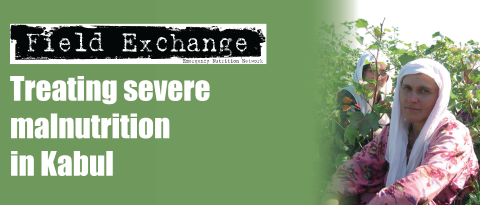Impact of Emergency SFP in Guinea-Bissau
A team of researchers recently investigated the effect of an SFP on malnourished children in Guinea-Bissau who were returning to their homes after having been displaced within the country because of war in 1998-99.
From June 1998 to May 1999, Guinea-Bissau experienced an armed conflict. There were several periods of fighting which were most intense in the capital. By the end of 1998, 196,000 persons were internally displaced and 6,600 had left the country. By the end of 1999, 265,000 IDPs had returned, and out of 7100 refugees who had left the country, 5,300 had returned. The Bandim Health Project (BHP) maintains a longitudinal demographic surveillance system in four suburbs of Bissau covering around 16% of the capital's population. During the war BHP took responsibility for humanitarian aid activities providing medicine and distributing food to IDPs. Supplementary feeding and medical treatment of undernourished children below five years of age started on 1st September 1998 at the health center in the BHP area and continued until March 2000. Children who were observed by field assistants to have a MUAC < 130mm were referred to the Bandim Health Centre where all children had MUAC, weight and height measured and were examined by a Guinean physician. Medical conditions were treated, and all malnourished children received dietary supplementation. Medicine and supplementary feeding were provided for seven days, and care-takers were instructed to return in one week for the children to be re-examined and receive supplementary feeding for another week. This was continued until the children recovered (MUAC > or = to 130mm). The care-taker of each child was supplied with micronutrient tablets and flour mix in an amount corresponding to 6500-8700 kJ/day. Leftovers could be given to other children in the family.
The effect of the war on the nutritional status of children aged 6-59 months who were present in Bissau sometime from September 1998 to June 1999 was evaluated by comparing the mortality and the prevalence of malnutrition with the values expected had the war not occurred and by comparing the severity of malnutrition in malnourished children before and during the war.
The degree of malnutrition did not increase during the war. The prevalence of malnutrition increased with the start of the war but then decreased. The mortality of malnourished children did not increase during the war. The severity of malnutrition among the malnourished children did not increase. Seventy four percent of the referred children received treatment; of those, 1% died, 67% recovered and 32% abandoned treatment. Compliance was 89%. The median time to recovery was 48 days. Better compliance was associated with shorter time to recovery.
The authors recognised that the findings may be biased by changes in the cultural and socioeconomic background of the malnourished children. Furthermore, it was impossible to separate out the impact of other interventions and the warfare itself - the study was too small to control for all possible confounders. However, the different analyses indicated a beneficial effect of the SFP. Thus, the authors asserted that the home-based SFP probably prevented nutritional deterioration during the war in Guinea- Bissau.
Imported from FEX website


